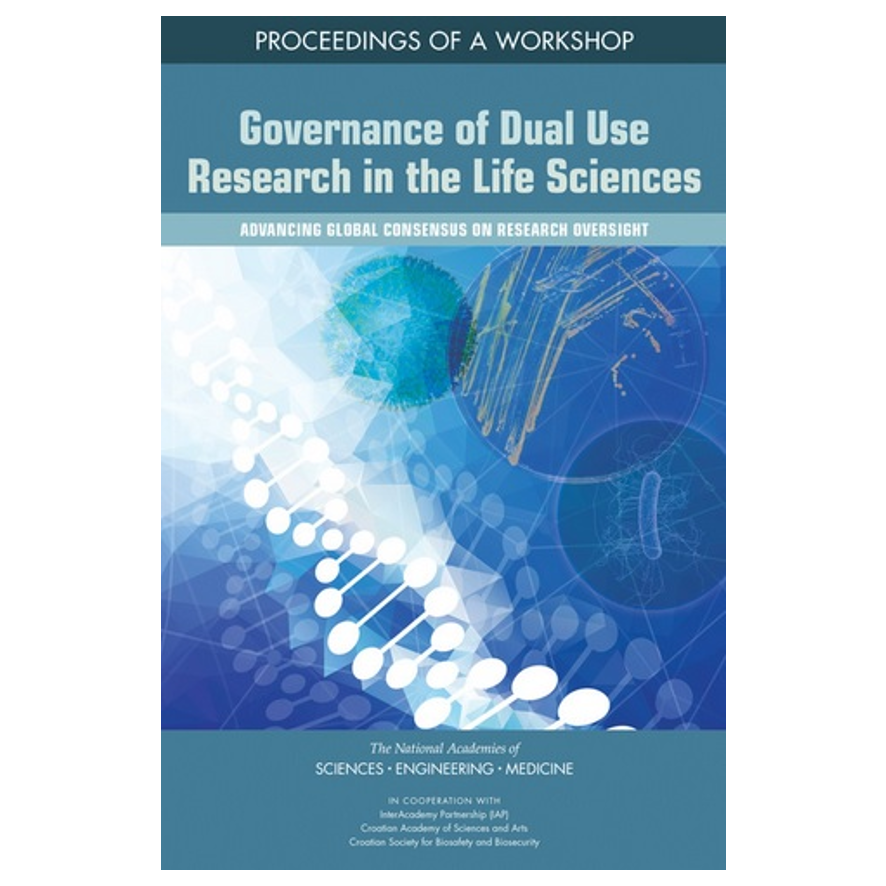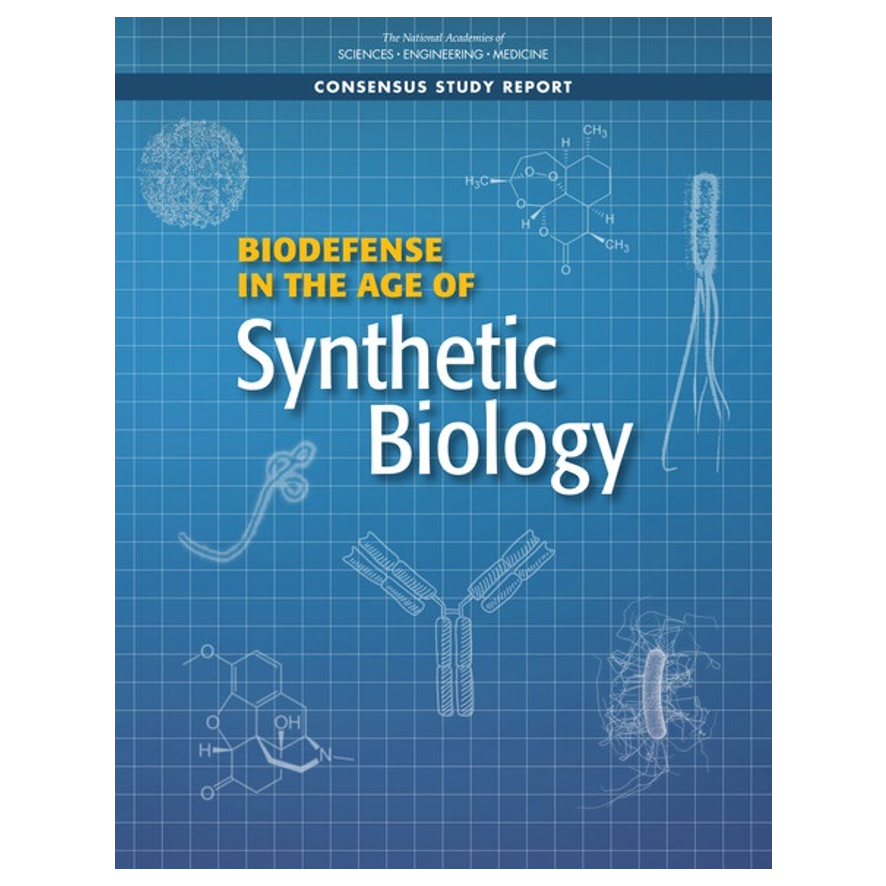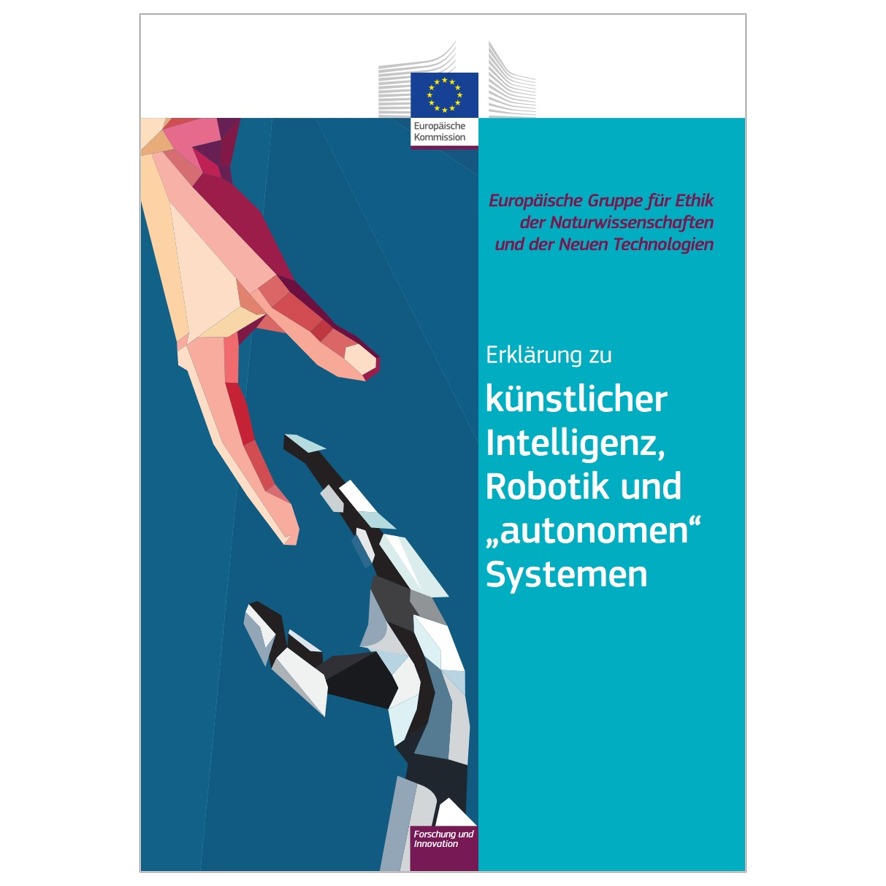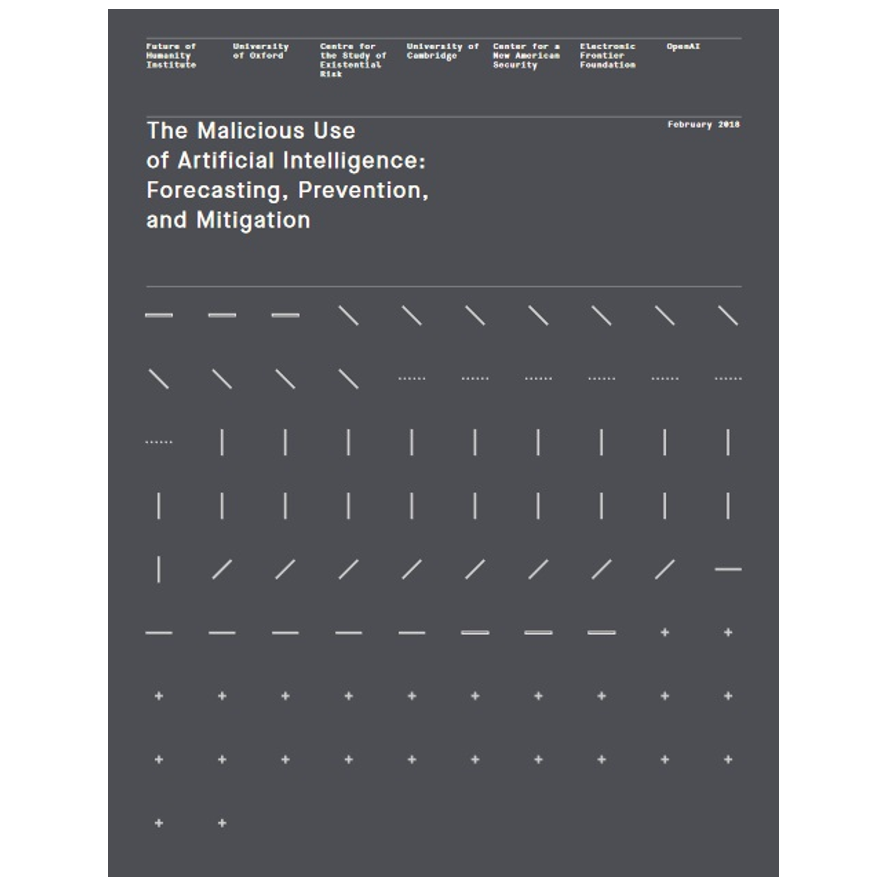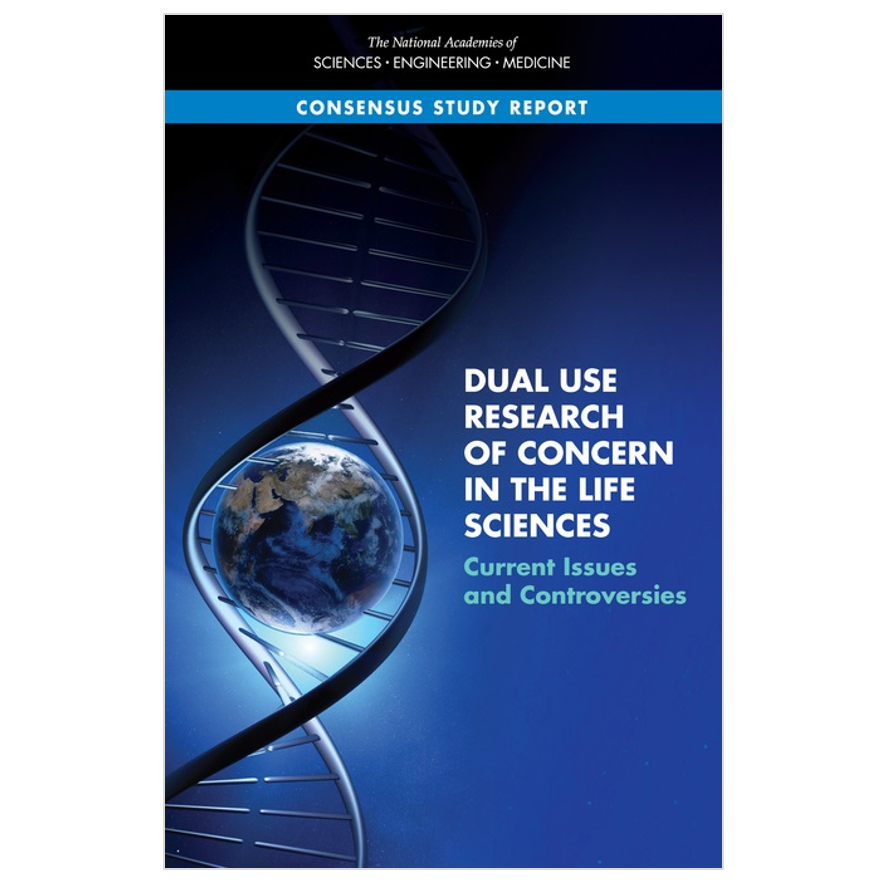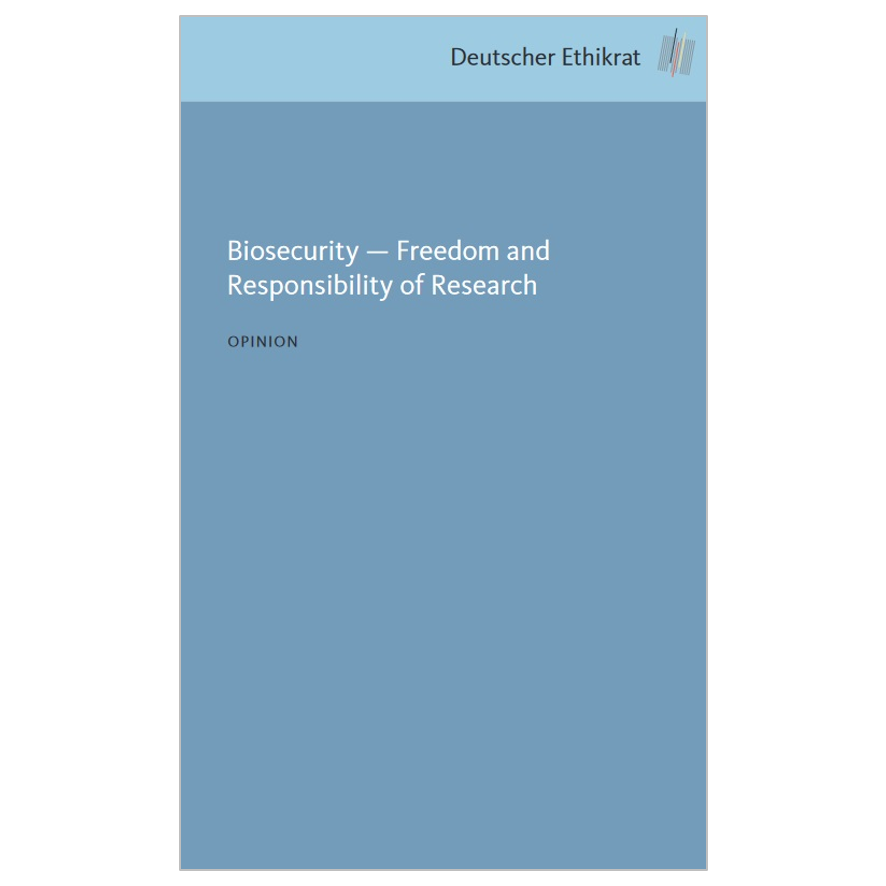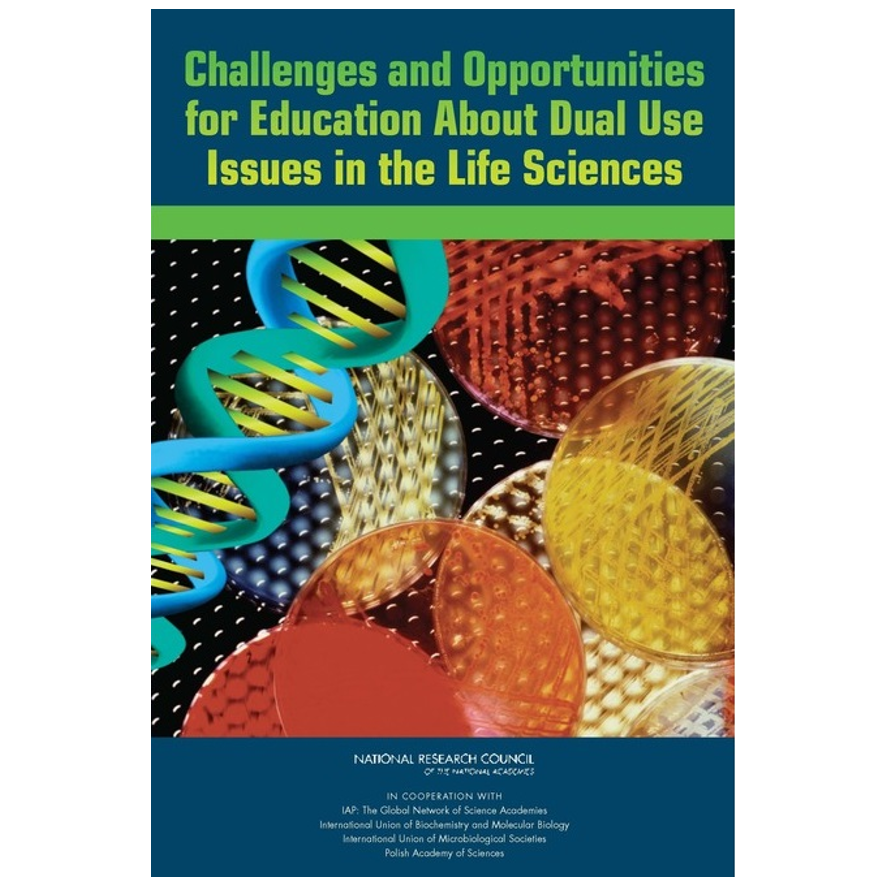Tags

-
Startseite
- /
- Studies/Reviews
Publikationen
-
The Convergence of Artificial Intelligence and the Life Sciences: Safeguarding Technology, Rethinking Governance, and Preventing Catastrophe
Mehr lesen: The Convergence of Artificial Intelligence and the Life Sciences: Safeguarding Technology, Rethinking Governance, and Preventing CatastropheRapid scientific and technological advances are fueling a 21st-century biotechnology revolution. Accelerating developments in the life sciences and in technologies such as artificial intelligence (AI), automation, and robotics are enhancing scientists’ abilities to engineer living systems for a broad range of purposes. These groundbreaking advances are critical to building a more productive, sustainable, and healthy…
-
Should Democracies Draw Redlines around Research Collaboration with China? A Case Study of Germany.
Mehr lesen: Should Democracies Draw Redlines around Research Collaboration with China? A Case Study of Germany.Global research collaboration in scientific and engineering fields has been critical to advancing the frontiers of knowledge, promoting economic prosper ity, and solving global challenges. The global research enterprise is, by design, largely open and unrestricted. However, new risks and challenges threaten this open collaboration, particularly regarding authoritarian nations like the People’s Republic of China…
-
How National Governments and Research Institutions Safeguard Knowlegde Development in Science and Technology
Mehr lesen: How National Governments and Research Institutions Safeguard Knowlegde Development in Science and TechnologyThe study provides an overview and comparative analysis of nine national approaches to strengthening knowledge security and the forces that drive them. The national approaches are those of Australia, Czech Republic, Finland, France, Germany, Japan, Taiwan, the United Kingdom and the United States. They all have developed different approaches, depending on the national political context,…
-
Information Brochure “The Handling of Security-Relevant Research in Germany – An Overview”
Mehr lesen: Information Brochure “The Handling of Security-Relevant Research in Germany – An Overview”The information brochure is dedicated to the most important questions about dealing with security-related research in Germany. It gives an initial insight into relevant subject areas, the importance and structure of the committes for ethics in security-related research and the legal framework and funding. It describes case studies and illustrates how ethical aspects of security-related research can be anchored…
-
Cloud labs: where robots do the research
Mehr lesen: Cloud labs: where robots do the researchA host of companies provide a remote, automated workforce for conducting experiments around the clock.
-
Dual use of artificial-intelligence-powered drug discovery
Mehr lesen: Dual use of artificial-intelligence-powered drug discoveryAn international security conference explored how artificial intelligence (AI) technologies for drug discovery could be misused for de novo design of biochemical weapons. A thought experiment evolved into a computational proof.
-
Brain Computer Interfaces: A New Existential Risk Factor
Mehr lesen: Brain Computer Interfaces: A New Existential Risk FactorThis paper identifies a new existential risk factor that has not been recognised in prior literature: Brain-Computer Interfaces (BCIs). We illustrate how BCI technology could significantly raise the existential risk from global totalitarianism in the near future. In particular this is achieved not just by expansion of surveillance, but the expansion of brain stimulation. At…
-
The origins of SARS-CoV-2: A critical review
Mehr lesen: The origins of SARS-CoV-2: A critical reviewSince the first reports of a novel severe acute respiratory syndrome (SARS)-like coronavirus in December 2019 in Wuhan, China, there has been intense interest in understanding how severe acute respiratory syndrome coronavirus 2 (SARS-CoV-2) emerged in the human population. Recent debate has coalesced around two competing ideas: a “laboratory escape” scenario and zoonotic emergence. Here,…
-
Cybercrime vs. Cyberwar: Paradigms for Addressing Malicious Cyber Activity
Mehr lesen: Cybercrime vs. Cyberwar: Paradigms for Addressing Malicious Cyber ActivityAlthough acts of cybercrime and cyberwar are different, the lines between the two have been become blurred over time. The nature of cyberspace has complicated the pre-existing doctrine for armed attacks, yet they are still being applied. Furthermore, the United States historically has responded to malicious cyber activity through a militarized lens. This tendency to…
-
A Code of Ethics for Gene Drive Research
Mehr lesen: A Code of Ethics for Gene Drive ResearchGene drives hold promise for use in controlling insect vectors of diseases, agricultural pests, and for conservation of ecosystems against invasive species. At the same time, this technology comes with potential risks that include unknown downstream effects on entire ecosystems as well as the accidental or nefarious spread of organisms that carry the gene drive…
-
Internet, the great radicalizer? Exploring relationships between seeking for online extremist materials and cognitive radicalization in young adults
Mehr lesen: Internet, the great radicalizer? Exploring relationships between seeking for online extremist materials and cognitive radicalization in young adultsAnecdotal evidence asserts that extremist materials on the internet play a decisive role in radicalization processes. However, due to a structural absence of empirical data in the current literature, it remains uncertain if—and to what extent—online extremist materials radicalize. Therefore, the approach of the current study was two-fold. First, we explored what types of online…
-
Risky Business – Rethinking Research Cooperation and Exchange with Non-Democracies
Mehr lesen: Risky Business – Rethinking Research Cooperation and Exchange with Non-DemocraciesStrategies for Foundations, Universities, Civil Society Organizations, and Think Tanks.
-
Rapid reconstruction of SARS-CoV-2 using a synthetic genomics platform
Mehr lesen: Rapid reconstruction of SARS-CoV-2 using a synthetic genomics platformReverse genetics has been an indispensable tool to gain insights into viral pathogenesis and vaccine development. The genomes of large RNA viruses, such as those from coronaviruses, are cumbersome to clone and manipulate in Escherichia coli owing to the size and occasional instability of the genome. Therefore, an alternative rapid and robust reverse-genetics platform for…
-
Wired Emotions: Ethical Issues of Affective Brain–Computer Interfaces
Mehr lesen: Wired Emotions: Ethical Issues of Affective Brain–Computer InterfacesEthical issues concerning brain–computer interfaces (BCIs) have already received a considerable amount of attention. However, one particular form of BCI has not received the attention that it deserves: Affective BCIs that allow for the detection and stimulation of affective states. This paper brings the ethical issues of affective BCIs in sharper focus. The paper briefly…
-
The China Defence Universities Tracker: Exploring the military and security links of China’s universities
Mehr lesen: The China Defence Universities Tracker: Exploring the military and security links of China’s universitiesThe Chinese Communist Party (CCP) is building links between China’s civilian universities, military and security agencies. Those efforts, carried out under a policy of leveraging the civilian sector to maximise military power (known as ‘military–civil fusion’), have accelerated in the past decade. Research for the China Defence Universities Tracker has determined that greater numbers of…
-
Ethics committees in security-relevant research according to the recommendations of Leopoldina and the German Research Foundation
Mehr lesen: Ethics committees in security-relevant research according to the recommendations of Leopoldina and the German Research FoundationThe scientific freedom protected by the German Basic Law is a prerequisite for the progress and prosperity of society. However, free research is also associated with risks resulting from the fact that useful research results and methods can be abused, for example as weapons of war or as a means of criminal or terrorist activities. According…
-
Governance of Dual Use Research in the Life Sciences: Advancing Global Consensus on Research Oversight: Proceedings of a Workshop
Mehr lesen: Governance of Dual Use Research in the Life Sciences: Advancing Global Consensus on Research Oversight: Proceedings of a WorkshopContinuing advances in science and technology offer the promise of providing tools to meet global challenges in health, agriculture, the environment, and economic development; some of the benefits are already being realized. However, such advances have the potential to challenge the oversight systems for responsible conduct of life sciences research with dual use potential –…
-
Picking flowers, making honey: The Chinese military’s collaboration with foreign universities
Mehr lesen: Picking flowers, making honey: The Chinese military’s collaboration with foreign universitiesChina’s People’s Liberation Army’s (PLA) collaboration with foreign universities is growing and the expansion of international ties remains one of the priorities of the PLA National University of Defense Technology (NUDT). The developments outlined in this report warrant more attention and different approaches from those currently employed by most governments and universities. Responses to PLA…
-
Agricultural research, or a new bioweapon system?
Mehr lesen: Agricultural research, or a new bioweapon system?Agricultural genetic technologies typically achieve their agronomic aims by introducing laboratory-generated modifications into target species’ chromosomes. However, the speed and flexibility of this approach are limited, because modified chromosomes must be vertically inherited from one generation to the next. In an effort to remove this limitation, an ongoing research program funded by the U.S. Defense…
-
Biodefense in the Age of Synthetic Biology
Mehr lesen: Biodefense in the Age of Synthetic BiologyScientific advances over the past several decades have accelerated the ability to engineer existing organisms and to potentially create novel ones not found in nature. Synthetic biology, which collectively refers to concepts, approaches, and tools that enable the modification or creation of biological organisms, is being pursued overwhelmingly for beneficial purposes ranging from reducing the…
-
Statement on artificial intelligence, robotics and ‘autonomous’ systems
Mehr lesen: Statement on artificial intelligence, robotics and ‘autonomous’ systemsAdvances in AI, robotics and so-called ‘autonomous’ technologies¹ have ushered in a range of increasingly urgent and complex moral questions. Current efforts to find answers to the ethical, societal and legal challenges that they pose and to orient them for the common good represent a patchwork of disparate initiatives. This underlines the need for a…
-
The Malicious Use of Artificial Intelligence: Forecasting, Prevention, and Mitigation
Mehr lesen: The Malicious Use of Artificial Intelligence: Forecasting, Prevention, and MitigationArtificial intelligence and machine learning capabilities are growing at an unprecedented rate. These technologies have many widely beneficial applications, ranging from machine translation to medical image analysis. Countless more such applications are being developed and can be expected over the long term. Less attention has historically been paid to the ways in which artificial intelligence…
-
Deep neural networks are more accurate than humans at detecting sexual orientation from facial images.
Mehr lesen: Deep neural networks are more accurate than humans at detecting sexual orientation from facial images.We show that faces contain much more information about sexual orientation than can be perceived or interpreted by the human brain. We used deep neural networks to extract features from 35,326 facial images. These features were entered into a logistic regression aimed at classifying sexual orientation. Given a single facial image, a classifier could correctly…
-
Construction of an infectious horsepox virus vaccine from chemically synthesized DNA fragments
Mehr lesen: Construction of an infectious horsepox virus vaccine from chemically synthesized DNA fragmentsEdward Jenner and his contemporaries believed that his variolae vaccinae originated in horses and molecular analyses show that modern vaccinia virus (VACV) strains share common ancestry with horsepox virus (HPXV). Given concerns relating to the toxicity of modern VACV vaccines, we asked whether an HPXV-based vaccine might provide a superior alternative. Since HPXV may be…
-
Four ethical priorities for neurotechnologies and AI
Mehr lesen: Four ethical priorities for neurotechnologies and AIArtificial intelligence and brain–computer interfaces must respect and preserve people’s privacy, identity, agency and equality, say Rafael Yuste, Sara Goering and colleagues.
-
Digital-to-biological converter for on-demand production of biologics
Mehr lesen: Digital-to-biological converter for on-demand production of biologicsManufacturing processes for biological molecules in the research laboratory have failed to keep pace with the rapid advances in automization and parellelization. We report the development of a digital-to-biological converter for fully automated, versatile and demand-based production of functional biologics starting from DNA sequence information. Specifically, DNA templates, RNA molecules, proteins and viral particles were…
-
Dual Use Research of Concern in the Life Sciences: Current Issues and Controversies
Mehr lesen: Dual Use Research of Concern in the Life Sciences: Current Issues and ControversiesThe potential misuse of advances in life sciences research is raising concerns about national security threats. “Dual Use Research of Concern in the Life Sciences: Current Issues and Controversies” examines the U.S. strategy for reducing biosecurity risks in life sciences research and considers mechanisms that would allow researchers to manage the dissemination of the results…
-
A Proliferation Assessment of Third Generation Laser Uranium Enrichment Technology
Mehr lesen: A Proliferation Assessment of Third Generation Laser Uranium Enrichment TechnologyLong-standing efforts to develop a commercially viable laser-based process for uranium enrichment, initially with atomic and later molecular isotope separation, have had limited success. This article discusses a model for a third generation of laser enrichment technology where CO2 laser light is Raman scattered to generate 16 μm photons that excite a vibrational mode in…
-
Engineered bat virus stirs debate over risky research
Mehr lesen: Engineered bat virus stirs debate over risky researchAn experiment that created a hybrid version of a bat coronavirus — one related to the virus that causes SARS (severe acute respiratory syndrome) — has triggered renewed debate over whether engineering lab variants of viruses with possible pandemic potential is worth the risks.
-
A SARS-like cluster of circulating bat coronaviruses shows potential for human emergence
Mehr lesen: A SARS-like cluster of circulating bat coronaviruses shows potential for human emergenceThe emergence of severe acute respiratory syndrome coronavirus (SARS-CoV) and Middle East respiratory syndrome (MERS)-CoV underscores the threat of cross-species transmission events leading to outbreaks in humans. Here we examine the disease potential of a SARS-like virus, SHC014-CoV, which is currently circulating in Chinese horseshoe bat populations1. Using the SARS-CoV reverse genetics system2, we generated…
-
Biosecurity — Freedom and Responsibility of Research: Opinion
Mehr lesen: Biosecurity — Freedom and Responsibility of Research: OpinionSome research results obtained in the life sciences can be used not only for the benefit of individuals and society as a whole, but also misused with intent to cause harm. Research such as this is referred to as Dual Use Research of Concern (DURC). To counteract such misuse proactively the German Ethics Council advocates…
-
Experimental Adaptation of Wild-Type Canine Distemper Virus (CDV) to the Human Entry Receptor CD150
Mehr lesen: Experimental Adaptation of Wild-Type Canine Distemper Virus (CDV) to the Human Entry Receptor CD150Canine distemper virus (CDV), a close relative of measles virus (MV), is widespread and well known for its broad host range. When the goal of measles eradication may be achieved, and when measles vaccination will be stopped, CDV might eventually cross the species barrier to humans and emerge as a new human pathogen. In order…
-
Airborne Transmission of Influenza A/H5N1 Virus Between Ferrets
Mehr lesen: Airborne Transmission of Influenza A/H5N1 Virus Between FerretsHighly pathogenic avian influenza A/H5N1 virus can cause morbidity and mortality in humans but thus far has not acquired the ability to be transmitted by aerosol or respiratory droplet (“airborne transmission”) between humans. To address the concern that the virus could acquire this ability under natural conditions, we genetically modified A/H5N1 virus by site-directed mutagenesis…
-
Experimental adaptation of an influenza H5 HA confers respiratory droplet transmission to a reassortant H5 HA/H1N1 virus in ferrets
Mehr lesen: Experimental adaptation of an influenza H5 HA confers respiratory droplet transmission to a reassortant H5 HA/H1N1 virus in ferretsHighly pathogenic avian H5N1 influenza A viruses occasionally infect humans, but currently do not transmit efficiently among humans. The viral haemagglutinin (HA) protein is a known host-range determinant as it mediates virus binding to host-specific cellular receptors. Here we assess the molecular changes in HA that would allow a virus possessing subtype H5 HA to…
-
On the Feasibility of Side-Channel Attacks with Brain-Computer Interfaces
Mehr lesen: On the Feasibility of Side-Channel Attacks with Brain-Computer InterfacesBrain computer interfaces (BCI) are becoming increasingly popular in the gaming and entertainment industries. Consumer-grade BCI devices are available for a few hundred dollars and are used in a variety of applications, such as video games, hands-free keyboards, or as an assistant in relaxation training. There are application stores similar to the ones used for…
-
Challenges and Opportunities for Education About Dual Use Issues in the Life Sciences
Mehr lesen: Challenges and Opportunities for Education About Dual Use Issues in the Life SciencesThe Challenges and Opportunities for Education About Dual Use Issues in the Life Sciences workshop was held to engage the life sciences community on the particular security issues related to research with dual use potential. More than 60 participants from almost 30 countries took part and included practicing life scientists, bioethics and biosecurity practitioners, and…
-
Characterization of the Reconstructed 1918 Spanish Influenza Pandemic Virus
Mehr lesen: Characterization of the Reconstructed 1918 Spanish Influenza Pandemic VirusThe pandemic influenza virus of 1918–1919 killed an estimated 20 to 50 million people worldwide. With the recent availability of the complete 1918 influenza virus coding sequence, we used reverse genetics to generate an influenza virus bearing all eight gene segments of the pandemic virus to study the properties associated with its extraordinary virulence. In…
-
Chemical Synthesis of Poliovirus cDNA: Generation of Infectious Virus in the Absence of Natural Template
Mehr lesen: Chemical Synthesis of Poliovirus cDNA: Generation of Infectious Virus in the Absence of Natural TemplateFull-length poliovirus complementary DNA (cDNA) was synthesized by assembling oligonucleotides of plus and minus strand polarity. The synthetic poliovirus cDNA was transcribed by RNA polymerase into viral RNA, which translated and replicated in a cell-free extract, resulting in the de novo synthesis of infectious poliovirus. Experiments in tissue culture using neutralizing antibodies and CD155 receptor–specific…




